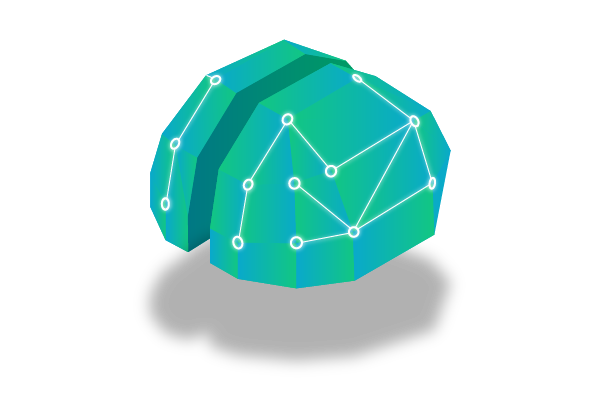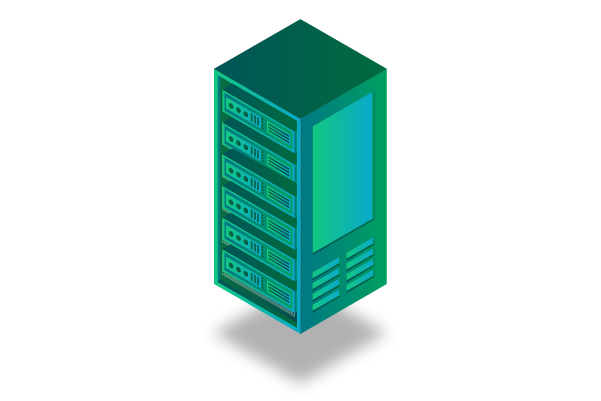As blockchain adoption accelerates across AI systems, global payments, real-time trading, and high-performance decentralized applications, the race for the fastest Layer-1 blockchain in 2026 has never been more competitive. Today’s leading networks aren’t just measured by theoretical TPS, they’re judged by real-world performance, scalability, finality speed, and their ability to support millions of concurrent users without compromising security.
In this 2026 ranking, we identify the Top 10 Fastest Layer-1 Blockchains, analyzing their architecture, execution models, and ecosystem maturity to reveal which networks are truly built for next-generation Web3 workloads. Whether you’re a developer, investor, or infrastructure architect, this list highlights the L1s that will define blockchain performance in the years ahead.
The Future of High Speed L1 Blockchain Networks

As blockchain adoption accelerates across global finance, AI-driven automation, and high-performance consumer applications, the future of high-speed Layer 1 networks is shifting toward architectures that emphasize scalability, modular design, predictable fees, and seamless interoperability. The race is no longer solely about achieving the highest theoretical TPS, it’s about delivering real-world performance that can support billions of daily transactions without sacrificing security or decentralization.
In the coming years, Layer 1 blockchains are expected to evolve in several key directions:
1. Modular and Parallel Execution as the New Standard
Future L1s will increasingly separate execution, consensus, data availability, identity, and asset layers. This modular approach allows chains to scale independently and achieve higher throughput through parallel transaction processing.
2. Stablecoin-Driven Gas Models Will Gain Traction
Volatile native gas tokens create unpredictable fees. Chains adopting stablecoin-based gas models—like HLUSD on HeLa—offer a more sustainable and user-friendly alternative, especially for enterprise, fintech, and AI-powered systems.
Also read: What is the Ethereum Virtual Machine (EVM)? A Beginner’s Guide
3. Native Support for AI and Machine-Assisted Transactions
AI agents will become major blockchain users. High-speed L1s will integrate features such as autonomous execution, low-latency finality, and identity frameworks designed for machine-to-machine transactions.
4. Enhanced Interoperability Between L1 and L2 Ecosystems
As L2s mature, high-speed L1s will serve as secure settlement layers. Cross-chain messaging, shared liquidity, and unified identity layers will reshape how apps interact across multiple networks.
5. Real-World Use Cases Will Define Success
The next wave of high-speed L1 adoption will be driven by real utility:
- global payments
- tokenized assets
- on-chain compliance
- enterprise automation
- gaming and social apps
- AI-driven microtransactions
Networks that focus on practical, sustainable throughput — not inflated TPS numbers — will lead the market.
Top 10 Fastest Layer 1 Blockchain Networks in 2026 (Ranked by Speed & Scalability)

As the blockchain ecosystem evolves, Layer-1 (L1) networks continue competing to deliver faster transaction speeds, stronger security models, and more scalable infrastructures. These chains form the foundational layer of modern decentralized ecosystems, powering DeFi, GameFi, tokenization, AI-driven networks, payments, and enterprise grade applications. In 2026, several L1 blockchains stand out due to high TPS benchmarks, robust developer activity, and real-world adoption
1. HeLa
Approx TPS: High throughput with modular parallel execution (designed for scalable, real-world performance)
Consensus: Modular PoS Architecture + Adaptive Finality Layer
Best For: Stablecoin-based applications, Web3–Web2 integrations, AI-powered dApps, enterprise-grade financial systems
HeLa is a next-generation Layer-1 blockchain designed around real world usability, stablecoin-native economics, and modular architecture. Unlike most L1s that rely on volatile native tokens for gas, HeLa uses HLUSD, a fully collateralized stablecoin, ensuring predictable and stable transaction fees a critical requirement for enterprise adoption and financial applications.
Its modular design separates execution, consensus, identity, asset integration, and privacy layers. This allows the chain to scale efficiently while supporting privacy-preserving transactions, decentralized identity (DID), and EVM compatibility.
Key Strengths
- Stablecoin-native gas model using HLUSD
- Modular architecture for scalability and real-world applications
- Strong emphasis on identity, asset integration, and privacy layers
- EVM compatible environment to onboard existing developers
- Predictable fee structure ideal for businesses and financial systems
Why It Matters
HeLa represents one of the most practical and enterprise-ready approaches to blockchain adoption. By addressing fee volatility, privacy needs, identity verification, and cross-runtime asset integration, HeLa positions itself as a powerful infrastructure layer for global payments, AI-driven systems, regulated industries, and next-generation decentralized applications.
2. Solana (SOL)
Approx TPS: 50,000+ (theoretical), 2,000–4,000 (real-world)
Consensus: Proof of History (PoH) + Proof of Stake (PoS)
Best For: High-performance DeFi, payments, consumer dApps
Solana remains one of the fastest and most scalable L1 blockchains, leveraging its unique Proof of History mechanism to sequence transactions efficiently. Its runtime, parallel execution (Sealevel), and extremely low fees make it ideal for high-throughput use cases like order-book DEXes, on-chain trading systems, and consumer applications.
Key Strengths
- Lightning-fast block confirmation times
- Strong DeFi ecosystem and liquidity
- Major adoption in consumer apps and meme coins
- Vibrant developer community
Why It Matters
Solana’s hybrid architecture positions it as one of the most realistic contenders for mass-scale Web3 applications, from payments to tokenized assets.
2. BNB Chain (BNB)
Approx TPS: 5,000–10,000
Consensus: Proof of Staked Authority (PoSA)
Best For: Scalable dApps, exchanges, gaming
BNB Chain is rooted in ecosystem strength and volume. The chain powers millions of daily transactions, offering predictable low fees and seamless EVM compatibility. It remains one of the most actively used networks thanks to Binance’s global presence and its large retail user base.
Key Strengths
- Large ecosystem and liquidity
- Strong support for EVM dApps
- Fast block production
- Massive global user adoption
Why It Matters
BNB Chain continues to dominate in retail adoption and real usage metrics, sustaining its place among the fastest and most-utilized L1 chains.
3. Sui (SUI)
Approx TPS: 300,000+ (optimized conditions)
Consensus: Narwhal & Bullshark + Move language
Best For: High-speed consumer apps, gaming, asset tokenization
Sui stands out through parallelized transaction processing. Instead of processing all transactions sequentially, Sui executes independent transactions simultaneously dramatically improving TPS.
Key Strengths
- Move-based smart contracts focusing on security
- Horizontal scaling design
- Ultra-fast finality
- Strong traction in gaming and digital assets
Why It Matters
Sui is rapidly gaining attention as a next-generation chain designed for true high-throughput applications at Web2 scale.
4. Aptos (APT)
Approx TPS: 160,000+
Consensus: AptosBFT + Move language
Best For: Enterprise-grade dApps, financial apps, next-gen Web3 tools
Aptos, built by former Meta engineers, introduces highly optimized parallel execution and sub-second latency. Its architecture is designed for large-scale enterprise deployments and consumer-facing platforms.
Key Strengths
- High throughput and extremely low latency
- Secure Move-based programming
- Consistent upgrades from an active core team
- Growing ecosystem in gaming and Web3 infrastructure
Why It Matters
Aptos is becoming a leading chain for enterprise-grade and commercial-level applications requiring predictable speed.
5. Avalanche (AVAX)
Approx TPS: 4,500+
Consensus: Avalanche Consensus
Best For: Subnets, institutions, tokenization, finance
Avalanche takes a modular approach with Subnets — customizable blockchains optimized for specific use cases. Its consensus mechanism enables near-instant finality, making it a strong competitor for institutional-scale applications.
Key Strengths
- Customizable Subnet architecture
- Fast, finality under a second
- Strong enterprise engagement
- Expanding ecosystem
Why It Matters
Avalanche’s enterprise traction keeps it at the forefront of scalable blockchain design.
6. Near Protocol (NEAR)
Approx TPS: 100,000+
Consensus: Nightshade Sharding + PoS
Best For: Consumer dApps, onboarding newcomers, mobile-first Web3
Near uses dynamic sharding to scale performance as user activity grows. Its system allows transactions to be processed in parallel across multiple shards, providing near-infinite scalability potential.
Key Strengths
- Human-readable account names
- Fast and developer-friendly
- Real scalability through sharding
- Active integration with cross-chain ecosystems
Why It Matters
Near’s focus on usability and scalability makes it one of the most accessible chains for both users and developers.
7. Cardano (ADA)
Approx TPS: 250–1,000+ (scaling with Hydra)
Consensus: Ouroboros PoS
Best For: Academic research, governance-rich ecosystems, regulated markets
Cardano emphasizes peer-reviewed development and mathematically proven security. With Hydra scaling implemented, Cardano can process transactions across multiple “heads” for parallel throughput.
Key Strengths
- Extremely secure and research-driven
- Low energy consumption
- Hydra scaling for higher TPS
- Strong community governance
Why It Matters
Cardano’s methodical approach continues attracting institutions and long-term developers.
8. Algorand (ALGO)
Approx TPS: 6,000+
Consensus: Pure Proof of Stake (PPoS)
Best For: Tokenization, payments, compliance-focused apps
Algorand is engineered for immediate finality — blocks finalize in seconds with virtually zero forks. This makes it ideal for fintech, CBDC experiments, and digital asset tokenization.
Key Strengths
- Very low fees
- Instant finality
- High reliability
- Strong institutional interest
Why It Matters
Algorand remains a leader in predictable, stable performance, suitable for regulated environments.
9. Fantom Sonic (FTM)
Approx TPS: 200,000+ (Sonic upgrade)
Consensus: Lachesis DAG + Sonic
Best For: DeFi, high-frequency trading, real-time applications
With its Sonic upgrade, Fantom massively boosts its throughput, rivaling the fastest L1 chains. Sonic is optimized for extremely low latency and near-zero fees, making Fantom popular in the DeFi world.
Key Strengths
- Insanely fast finality
- High throughput from DAG architecture
- Strong DeFi ecosystem
- Low costs
Why It Matters
Fantom is evolving into one of the fastest chains specifically designed for real-time financial applications.
10. Hedera Hashgraph (HBAR)
Approx TPS: 10,000+
Consensus: Hashgraph Gossip-about-Gossip + Virtual Voting
Best For: Enterprise, supply chain, identity, payments
Hedera uses a unique Hashgraph algorithm instead of traditional blockchain. It offers predictable performance, enterprise-grade tools, and high stability — supported by a governing council of global corporations.
Key Strengths
- Extremely fast with predictable finality
- Enterprise governance
- High security and ABFT consensus
- Ideal for real-world commercial apps
Why It Matters
Hedera’s enterprise partnerships and unique technology make it one of the most reliable L1 infrastructures.
Why Speed Matters for Next-Generation Web3 Applications

Speed has become one of the most critical factors shaping the future of Web3. As decentralized technologies move beyond experimentation and begin supporting real-world, high-demand use cases, the ability of a Layer-1 blockchain to process thousands or even millions of transactions per second is no longer optional. It is the foundation for seamless digital experiences, reliable financial systems, and scalable decentralized infrastructure.
Fast execution, low latency, and predictable finality enable Web3 applications to compete directly with traditional Web2 platforms, bridging the gap between decentralized trust and real-world performance.
1. Real-Time User Interactions Require Instant Finality
Modern applications from gaming to social platforms depend on rapid interaction loops. A delay of even a second can break user experience.
High-speed L1s ensure:
- sub-second confirmations
- smooth gameplay and in-app asset transfers
- instant messaging, posting, and social interactions
Without fast finality, user-facing Web3 applications cannot feel truly “real-time.”
2. High-Throughput DeFi Needs Millisecond-Level Execution
DeFi has evolved far beyond simple token swaps. Today’s markets require:
- real-time price updates
- algorithmic trading
- high-frequency execution
- complex on-chain financial operations
High-speed L1s allow decentralized exchanges (DEXs), lending markets, derivatives, and automated trading systems to operate with the precision and responsiveness users expect from centralized platforms.
3. AI Agents and Autonomous Systems Demand High Performance
AI-driven Web3 systems such as autonomous trading bots, AI wallets, or on-chain decision-making agents operate continuously and at machine-level speed.
To support this, blockchains must deliver:
- rapid state changes
- deterministic transaction ordering
- low-latency execution
Slow chains simply cannot support the next wave of AI-integrated Web3 automation.
4. Scalable Payments and Global Transfers Must Be Instant
Cross-border payments, stablecoin transfers, and on-chain commerce rely on predictable, near-instant settlement.
High-speed L1s enable:
- real-time payment processing
- microtransactions
- subscription economies
- merchant-ready settlement times
This is essential for Web3 adoption in retail, fintech, and enterprise environments.
5. Massive User Onboarding Requires High Parallel Throughput
Mainstream adoption means millions of users performing actions every minute.
Only high-throughput L1s with parallel execution or modular scaling can:
- handle massive concurrency
- prevent network congestion
- keep fees stable under load
This is the key to supporting social networks, gaming ecosystems, and large-scale consumer platforms.
Also read: What is Blockchain Technology? A Simple Breakdown for Beginners
6. Enterprise and Government Systems Need Reliable Performance
Real-world applications—identity verification, supply chain automation, asset tokenization—cannot tolerate unpredictable speeds or network slowdowns.
Fast, scalable L1s offer:
- consistent transaction performance
- predictable fee structures
- support for high-volume enterprise workflows
This opens the door for regulated industries to integrate blockchain with confidence.
Conclusion
In a rapidly evolving landscape where speed, scalability, and real-world usability define the next generation of blockchain infrastructure, the fastest Layer-1 networks of 2026 are setting new performance standards. From ultra-parallel execution engines to modular architectures and stablecoin-driven ecosystems, each chain in this ranking brings its own breakthrough approach to supporting high-demand Web3 applications.
As adoption expands across AI automation, global payments, on-chain trading, gaming, and enterprise systems, the networks that balance raw throughput, developer accessibility, and long-term sustainability will lead the industry forward. Whether you’re choosing a platform to build on or evaluating the future of decentralized technology, these top-performing Layer-1 blockchains represent the foundations of Web3 scalability in 2026 and beyond.
Disclaimer : The information provided by Hela Labs in this article is intended for general informational purposes and does not reflect the company’s opinion. It is not intended as investment advice or recommendations. Readers are strongly advised to conduct their own thorough research and consult with a qualified financial advisor before making any financial decisions.

Joshua Soriano
I am a writer specializing in decentralized systems, digital assets, and Web3 innovation. I develop research-driven explainers, case studies, and thought leadership that connect blockchain infrastructure, smart contract design, and tokenization models to real-world outcomes.
My work focuses on translating complex technical concepts into clear, actionable narratives for builders, businesses, and investors, highlighting transparency, security, and operational efficiency. Each piece blends primary-source research, protocol documentation, and practitioner insights to surface what matters for adoption and risk reduction, helping teams make informed decisions with precise, accessible content.
- Joshua Soriano#molongui-disabled-link
- Joshua Soriano#molongui-disabled-link
- Joshua Soriano#molongui-disabled-link
- Joshua Soriano#molongui-disabled-link

